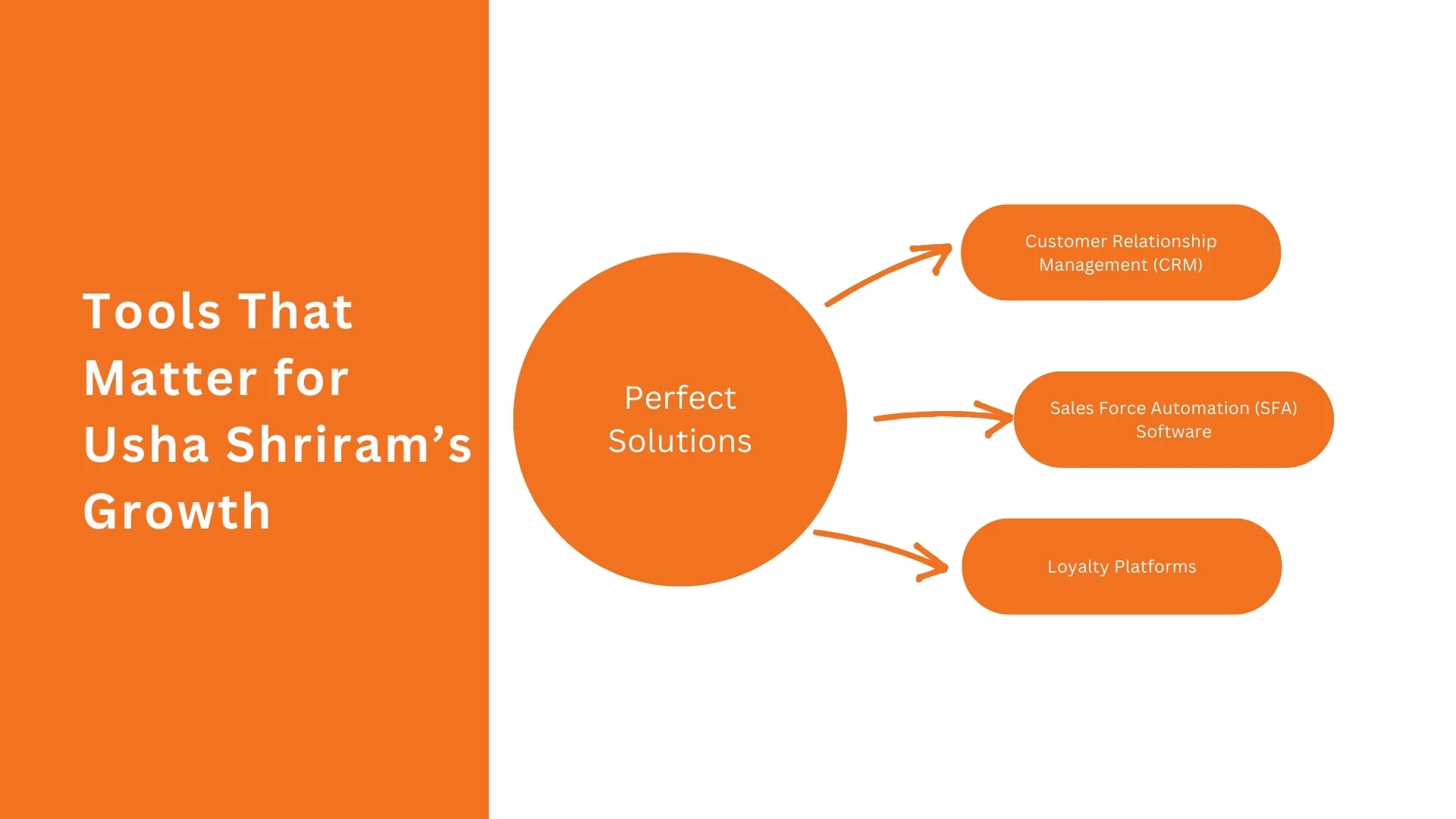Have you ever wondered how an electrical appliances major like Usha Shriram plans to expand its business into the FMCG sector?
Yes, it’s true. On 12th September 2025, COO (Chief Operating Officer) Satnam Singh Sandhu shared the company’s ambitious expansion plan. He mentioned that Usha Shriram will soon begin selling packaged drinking water in Kolkata, followed by a gradual addition of more products in this sector.
After this announcement, many users started asking: How will the company manage this new segment effectively? How will they achieve the benchmark of ₹1,000 Cr by the year 2030, as per their expansion plan?
Let’s take a closer look at Usha Shriram’s new business structure and the strategies they will employ in FMCG.
How Will Usha Shriram Manage in the FMCG Sector?
Here are some critical steps that the Usha Shriram management is expected to take to establish and grow this new business segment.This is solely focused on business functions, excluding material or setup expenses:

- Hiring Experts: Whenever a new business venture takes shape, experienced experts play a crucial role. Their expertise helps the business run smoothly and reach targeted goals faster.
- Dealers and Distributors Cycle: Dealers and distributors form the backbone of any business. The company will set targets for employees to acquire more dealers and distributors, ensuring wide market penetration.
- Field Officers and Employees: To maintain market reach, Usha Shriram will deploy field officers and employees who will actively promote products among all types of dealers and distributors.
- Work to Improve Brand Visibility: Brand visibility is a major factor in long-term profitability. Usha Shriram will invest in marketing, promotions, and campaigns to build awareness and trust in the FMCG space.
- Start Loyalty Programs: To retain dealers and distributors, Usha Shriram will implement incentive and loyalty programs, ensuring their continued engagement and long-term partnership.
By following these steps consistently, the company is ontrack to achieve its ₹1,000 Cr target by FY 2030.
Tools That Matter for Usha Shriram’s Growth

Customer Relationship Management (CRM)
A CRM system provides a complete solution to manage day-to-day business activities. With CRM, Usha Shriram can efficiently handle:
- Sales & Customer Management
- Operations & Workflow
- Analytics & Intelligence (AI-Powered Automation)
- Finance & Billing
- HR & Internal Use
CRM ensures smooth coordination across all teams, distributors, and field officers, giving management real-time insights to make smarter business decisions.
Sales Force Automation (SFA) Software
After onboarding distributors, dealers, employees, and fieldofficers, it becomes essential to track all activities effectively. TheAI-powered Sales Force Automation tool allows Usha Shriram to monitorperformance, manage orders, and analyze market trends.
Key features include:
- Field Force Management & Tracking
- Attendance & Activity Tracking
- Route & Territory Planning
- Dealer/Distributor Management
- Order & Inventory Management
- Performance & Incentives Tracking
- Analytics & Reports Dashboard (AI-Powered)
This ensures that the market expansion plan is executed efficiently while staying aligned with the company's revenue goals.
Loyalty Platforms
Retaining dealers and distributors is equally critical. A dedicated loyalty platform helps accelerate sales volume and maintain the interest of wholesalers.
It provides features such as:
- Partner Management
- Rewards & Incentives
- Communication & Engagement
- Program Management
- Data & Analytics (AI-Powered)
Through this platform, Usha Shriram can ensure consistent engagement, motivation, and long-term loyalty from its key partners in the FMCG ecosystem.
Streamline FMCG Sales with Sales Force Automation
Track field teams, manage orders, and gain real-time insights—1Channel SFA helps FMCG businesses scale efficiently and hit ambitious revenue targets.
Explore SFA Solutions →Power FMCG Growth with Unified CRM Solutions
Manage dealers, distributors, and operations seamlessly—1Channel CRM gives you the tools to achieve ₹1,000 Cr+ FMCG expansion goals.
Explore CRM Solutions →Frequently Asked Questions
Why is Usha Shriram entering the FMCG sector?
Usha Shriram aims to diversify its business beyond electrical appliances by entering high-demand FMCG categories like packaged drinking water, staples, and edible oils. This move helps the company tap into a fast-growing market and achieve long-term revenue goals.
What is Usha Shriram’s target revenue in FMCG?
The company plans to reach ₹1,000 Cr by the year 2030 through strategic expansion, effective distribution, and sales management.
How will Usha Shriram manage dealers and distributors in FMCG?
The company will establish a structured dealers and distributors cycle, hire field officers and employees, and implement loyalty programs to ensure engagement, growth, and market reach.
What role does CRM play in Usha Shriram’s FMCG expansion?
CRM helps the company manage sales, customer relationships, operations, analytics, HR, and finance efficiently. It ensures smooth coordination across teams and distributors while providing insights to make strategic decisions.
How does Sales Force Automation (SFA) support FMCG growth?
SFA tools help track field employees, monitor dealer activities, manage orders and inventory, and provide AI-powered analytics. This ensures efficient execution of sales and distribution plans.
Why are loyalty programs important for FMCG businesses?
Loyalty programs incentivize dealers and distributors, keeping them motivated and engaged. They accelerate sales, improve retention, and ensure a stable and productive partner network.
What challenges might Usha Shriram face in FMCG?
Challenges include competition from established FMCG brands, thin profit margins, and managing large-scale distribution networks. Effective use of CRM and SFA tools can help mitigate these risks.
How does AI enhance CRM and SFA tools for FMCG?
AI-powered automation helps in predictive analytics, decision-making, personalized engagement, and real-time reporting, making operations more efficient and data-driven.
How can CRM benefit other businesses looking to enter FMCG?
Like Usha Shriram, any business entering FMCG can leverageCRM to manage customers, distributors, sales, and analytics efficiently, helping them scale faster and achieve revenue targets.


